
|
Before this talk to the pioneer batch of the Buddhist Mentorship programme, I had asked if attendees had any questions. a. We had two questions about fate, and how to change our fate. b. Another two questions about work and career: dealing with bosses who have different expectations, and to do well in career. c. Related one on stress and expectations. d. another one on how to interact with people, and stop being a topic of idle chatter. e. A deep question about the 4 aharas, especially what is volition & consciousness. To cover these questions, I've decided to cover this three-part sutta class in the following 3 areas, with each separate session covering each area: Part I - Views - this covers the basic concepts in the Dharma, which are critical for further undersatnding. This tends to be a rabbithole, so I will cover only what is important to cover to address the above challenges/questions. However, to cover the questions on volition & consciousness, we have to dive a bit into the five Aggregates that are frequently mistaken as a Self. Part II - Motivation & Intentions - this covers the 2nd Factor of the Eightfold Path, and how we should approach it. This is the heart of the Eightfold Path, because this makes kamma. You don't need to fully perfect Right View to take on the Right Intentions & Motivations, but you need the Right Motivations & Intentions in order for Right Actions. Part III - Right Actions - This covers the remainder of the Eightfold Path, just before Right Mindfulness & Right Samadhi, which is about acting out the motivation & intention formed in the 2nd Factor of the Eightfold Path. Views For today's session, our focus on covering the 3 key aspects of Right View: a. The Four Truths b. Non-Self c. Cause & Effect # |

|
For the purpose of practicing the Eightfold Path, it's actually sufficient to understand the Four Truths and Cause & Effect. And since there was a question about volition/willpower, and also on consciousness, we will dive a bit into the nature of the Self/Non-Self, before going into Cause & Effect. # |
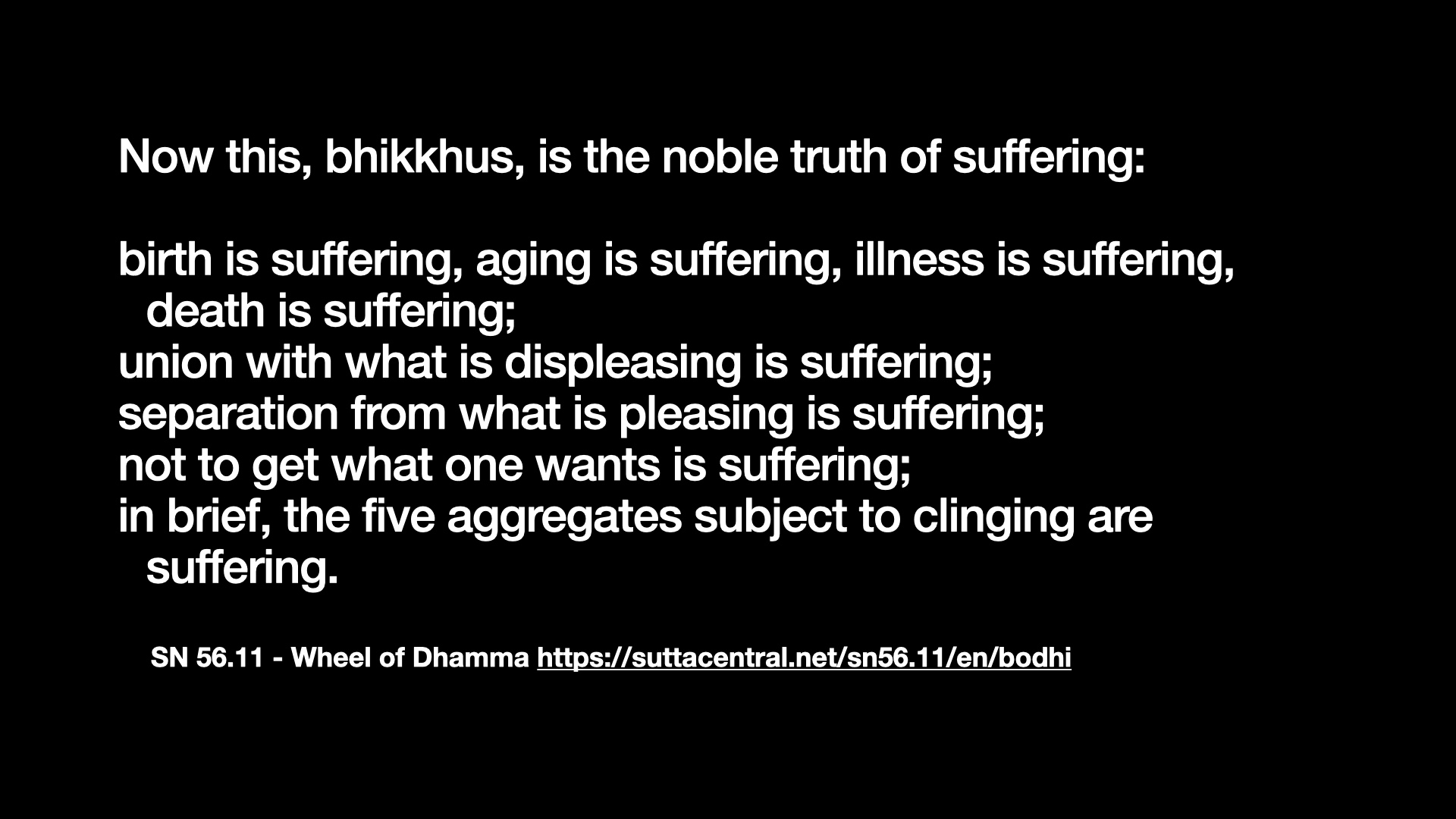
|
The first Noble Truth was spoken by the Buddha in his first sermon to the group of five monks. Note: it's not the moment dying out, nor the birth of the moment, which is how some people have interpreted this truth of suffering. These are life moments: these are specific moments. These are not just the birth and passing of a moment of a breath or of time. The Buddha is quite specific that this first Noble Truth is really about having the five aggregates. Having any of the five aggregates (which we will cover in a bit) is suffering. To be born is to suffer. To be reborn indefinitely is to suffer indefinitely. Note also that, “union with what is displeasing… separation from what is pleasing… not to get what one wants is (all) suffering.” These are in the First Truth, not the Second, but are intimately linked to the Second Truth. # |
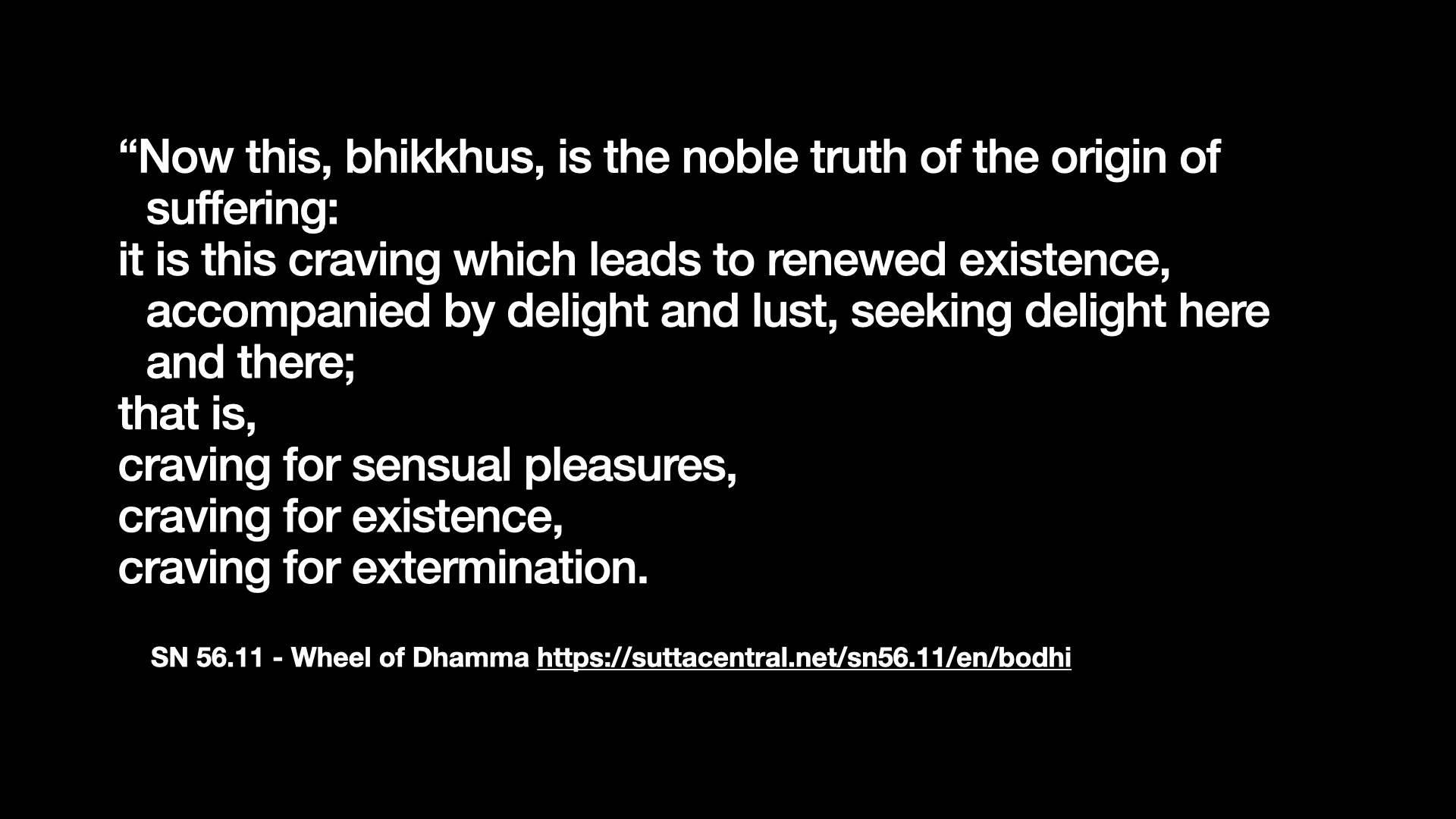
|
The Second Noble Truth is about the origin, the CAUSE of suffering. This cause is craving = wanting. The Pali term for this is taṇhā, which translates as THIRST. This is a useful guiding question. Anytime you're suffering, what is it that you want? That wanting is the cause of your suffering. "not to get what one wants is suffering” in the First Truth! Then the follow-up question: what can you do to let go of your wanting? That's covered in the next Noble Truth. # |

|
The Third Noble Truth notes that, when the craving (in the Second Truth) disappears, suffering also disappears. A good way to test this for yourself is to do this: Bring yourself back to the happiest moment of your life. Now, ask yourself, at that moment, did you want anything else or want to be anywhere else? Quite commonly, the answer is “no”. And you can see for yourself the strong correlation between the absence of craving and happiness of mind. What are the ways of the “remainderless fading away and cessation of that same craving”? These are the Four ways of Letting Go (also a talk by Ajahn Brahm), of not wanting: 1. Caga - giving, generosity. 2. Patinissaga - letting go. 3. Mutti - free, releasing 4. Analaya - Hima-laya, "resting place of the clouds". An = the opposite, so analaya is the non-reliance, not-resting, not-sticking. "Teflon mind" # |

|
What is the way that leads to the stopping of all suffering? That is the Fourth Truth. The Fourth Truth refers to Right View, which includes… the Four Truths! Is this tautological? No! Because of this loop repeats over time. This is recursive: you progress through the Eightfold Path loop back with more correct Right View... progress again,all the way to Right Samadhi… which then allows your mind to see even more clearly, further correcting Right View... and so on. # |

|
Besides stating the Four Truths, the Buddha also explained what you should do about each of these Truths. This is what you should do about each of the Four Truths: completely understand (suffering) give up (craving) realize (stopping of suffering) develop (the path leading to the stopping of suffering) When you have completed all four, congratulations, you're fully liberated! # |
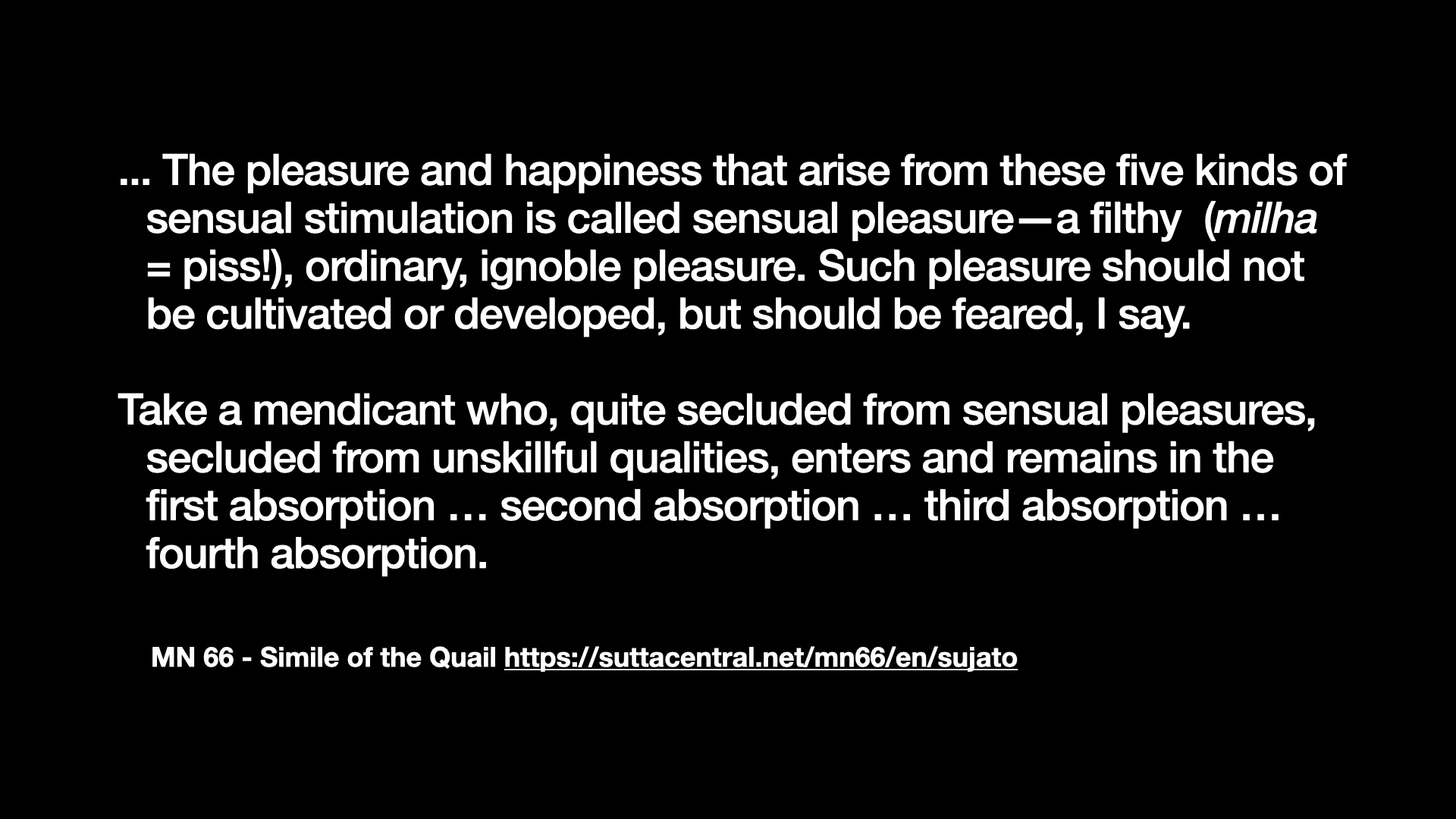
|
The Four Truths might all sound miserable or meh. “Life is suffering enough! Why do I need to suffer further?” But the Path is actually about increasing happiness and pleasure of the non-sensual type. When suffering decreases, happiness increases. And the Buddha spoke about the danger of sensual pleasures, even comparing it as a piss pleasure. So even the finest sunsets & wines you taste and smell are all piss pleasures, according to the Buddha. In contrast, the pleasures of the purely mind-sense (described here as the ‘absorptions’).. # |
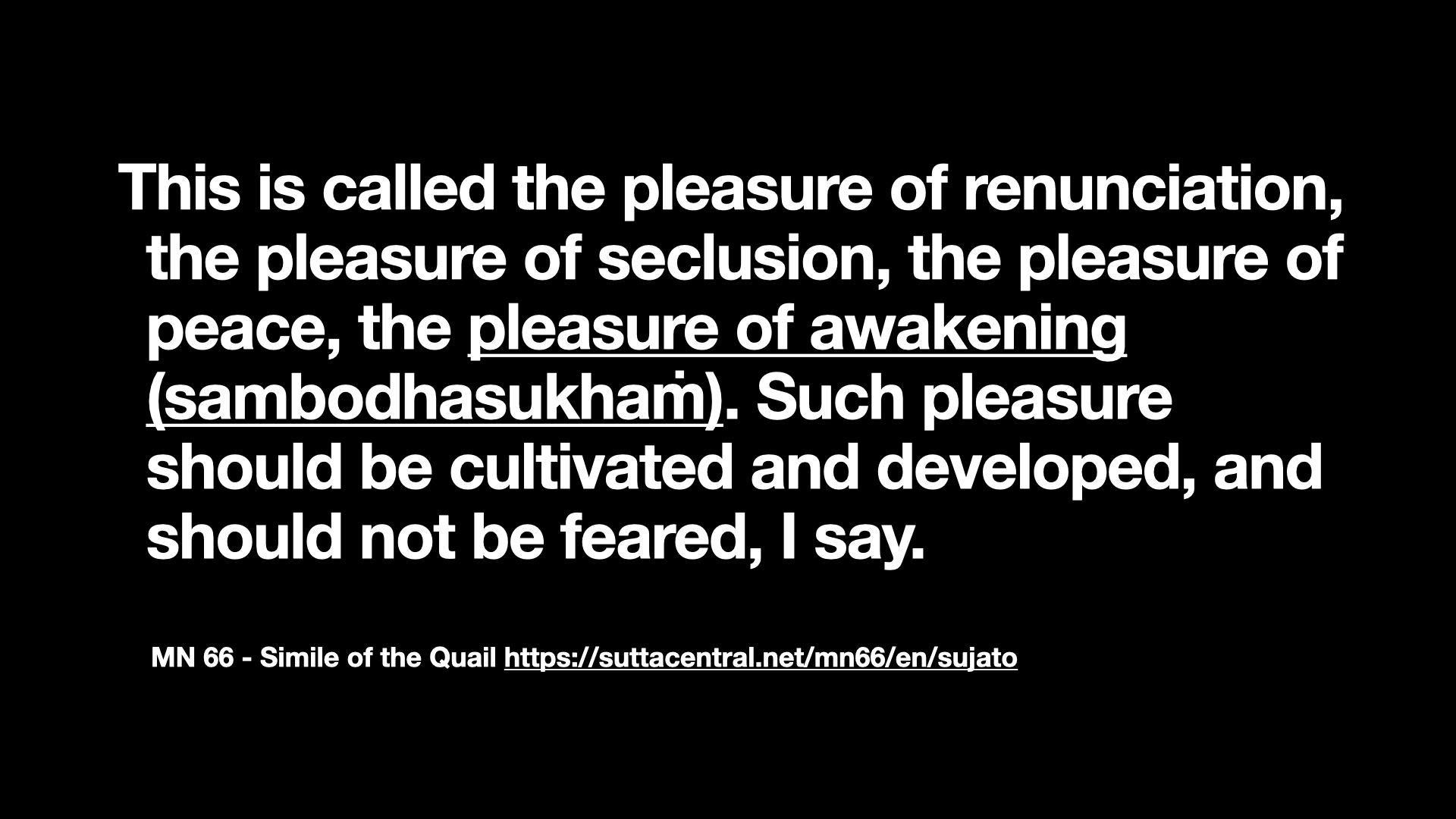
|
… are to be cultivated and developed, and not to be feared. This is one direct piece of evidence that the Buddha didn’t teach pure neutrality alone, but also taught about the cultivation of non-sensual pleasure as a necessary part of the Path. Why, then, do we enjoy sensual pleasures so much? # |
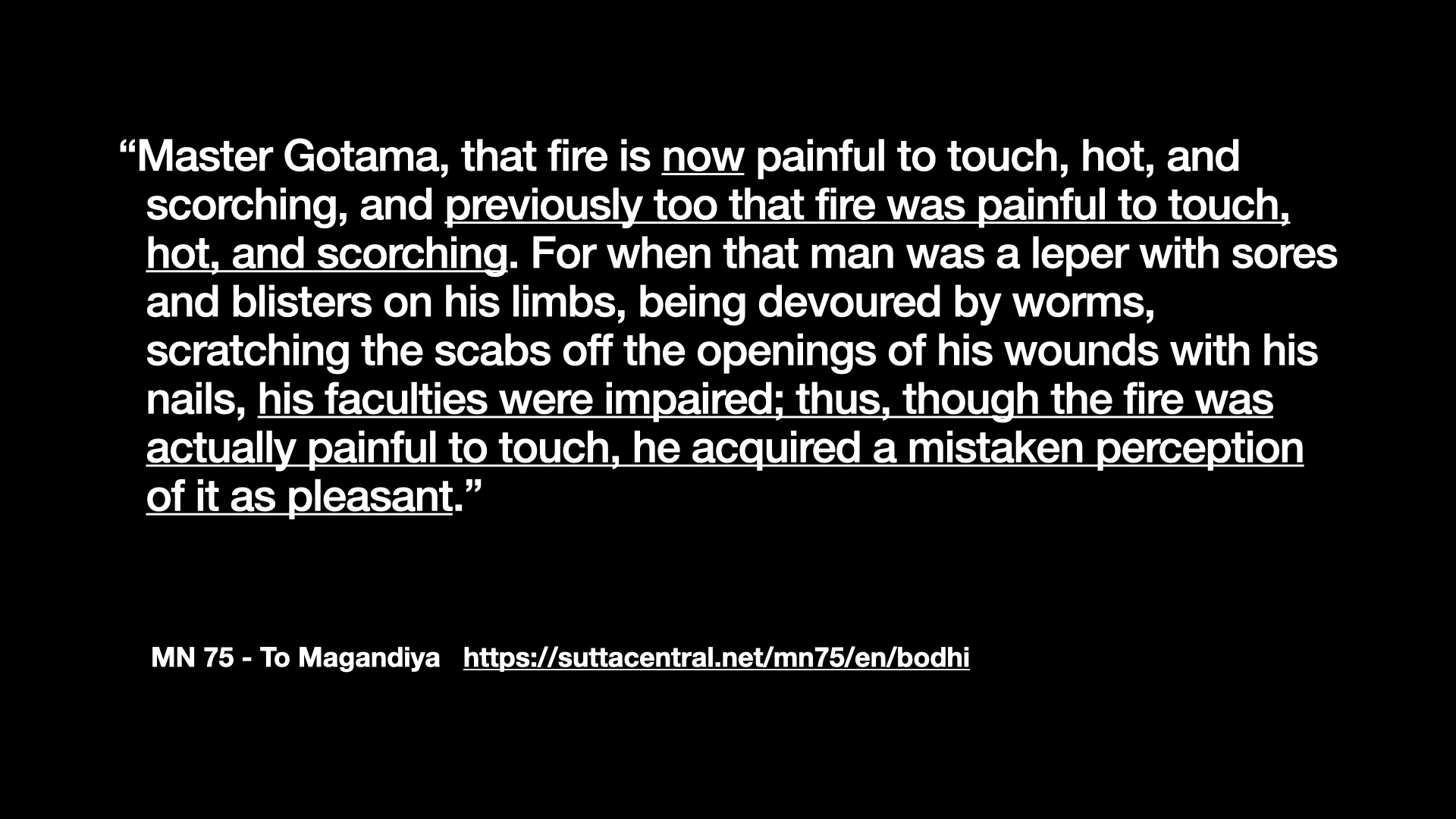
|
The main reason we enjoy sensual pleasures is that our perceptions are distorted by our defilements. The Buddha shared this simile of a leper who previously scorched his blisters over a fire, as a relief from the itch. This leper then gets cured. Would this leper still put his limbs over a fire? the Buddha asked. No, because previously “his faculties were impaired… he acquired a mistaken perception of (the fire) as pleasant.” # |
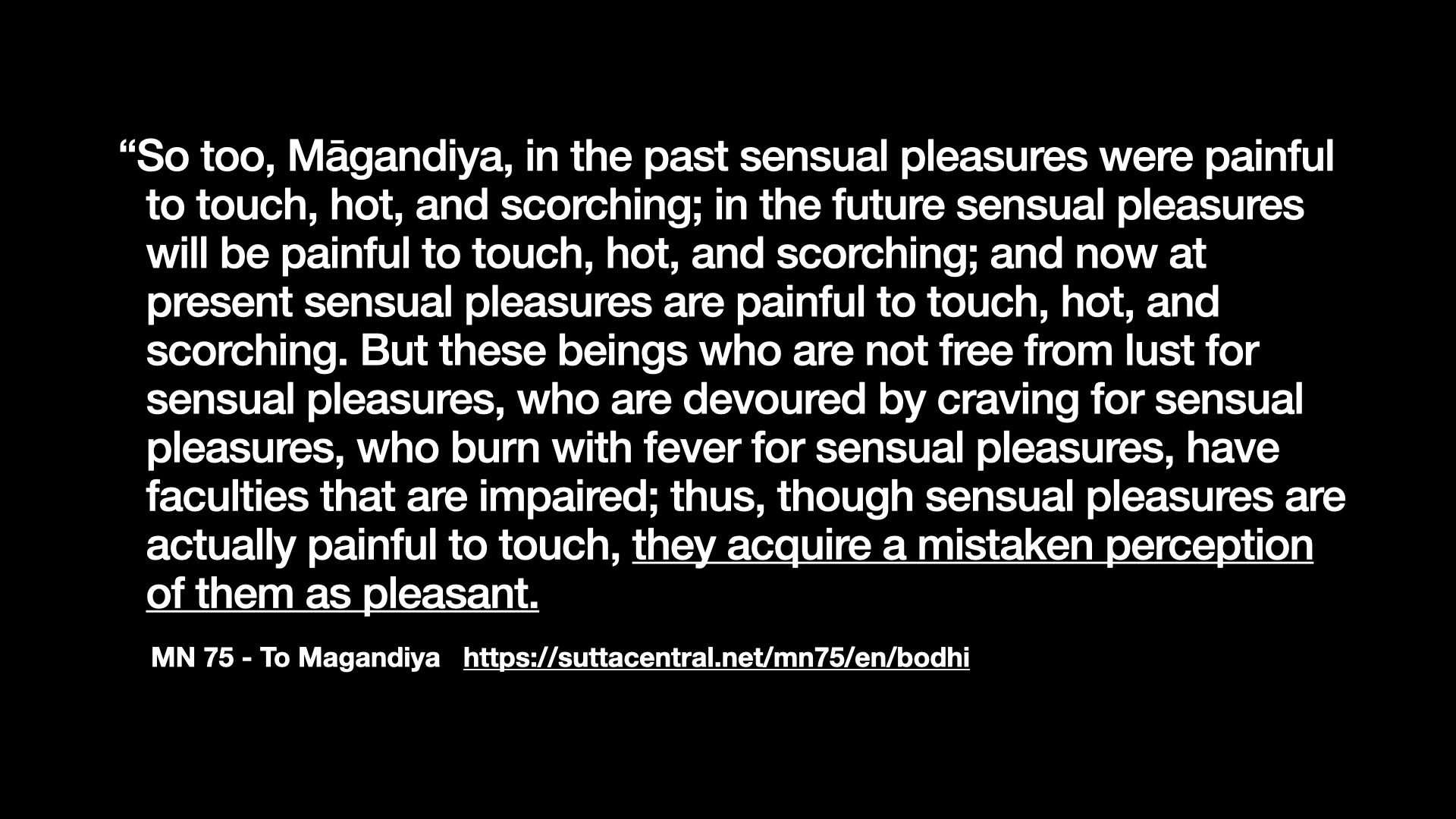
|
Then the Buddha asserts that like the leper, beings who are still defiled by craving, acquire a wrong perception that sensual pleasures are pleasant, when in fact these sensual pleasures have and always will be “painful to touch, hot and scorching”. So this path is about the increase of happiness and the removal of suffering as it is, about reality as it actually is. But what exactly is suffering, and what or who suffers? # |

|
… What exactly is suffering and what suffers? Who is the "you" who suffers? # |
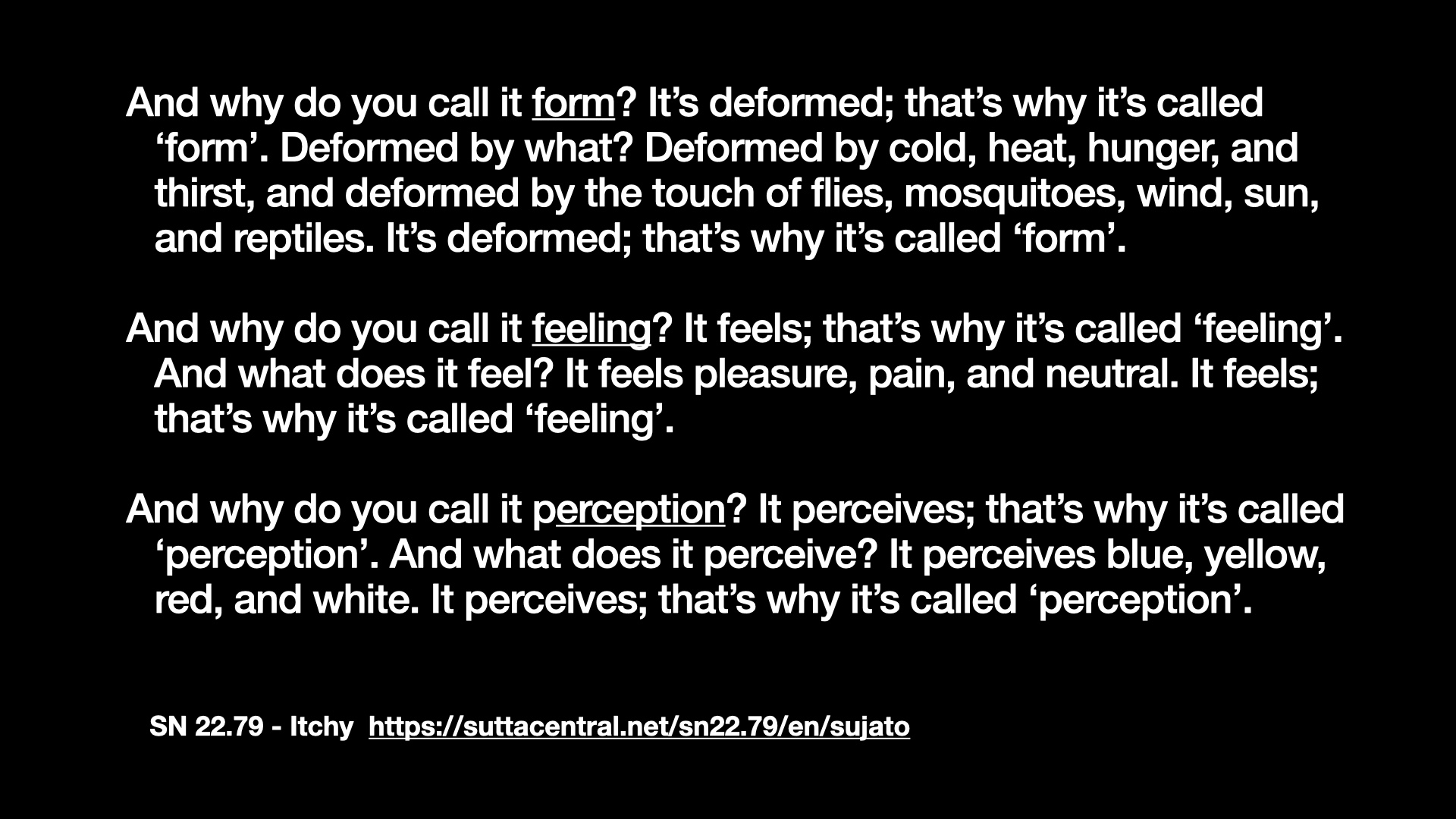
|
Every sentient being, including you, can be categorized into five aggregates or categories or components. The Buddha focused on these five aspects, as we tend to view a Self or Soul or permanent essence in each of these five components. These Five Aggregates - the five "things" that we view as our Self! - are: 1. Form - physical body, and its aspects and components. 2. Feeling - good, bad, neutral. To note, this isn’t really emotions, but is more about the six sense-feelings. Each sense feeling has a different quality compared to the others: e.g. smelly, fragrant, neutral; yummy, yucky, meh; beautiful, ugly, bland; etc. 3. Perception - seeing the aspects of the object e.g. blue, pink, etc. … # |

|
4. Volitional formations - the biggest aspect of this aggregate is will, including choice, decisions. This category ALSO includes thought and thinking. 5. Consciousnesses - the turning on of each sense organ's counterpart in the mind e.g. taste consciousness is very different from sight consciousness. (If you want to know what is taste consciousness, spit out your salivia on your hand, and slurp it back into your mouth: your taste of your own salivia will be quite prominent… then it disappears. That disappearance is the consciousness switching off.) How do these five aggregates relate with each other? # |
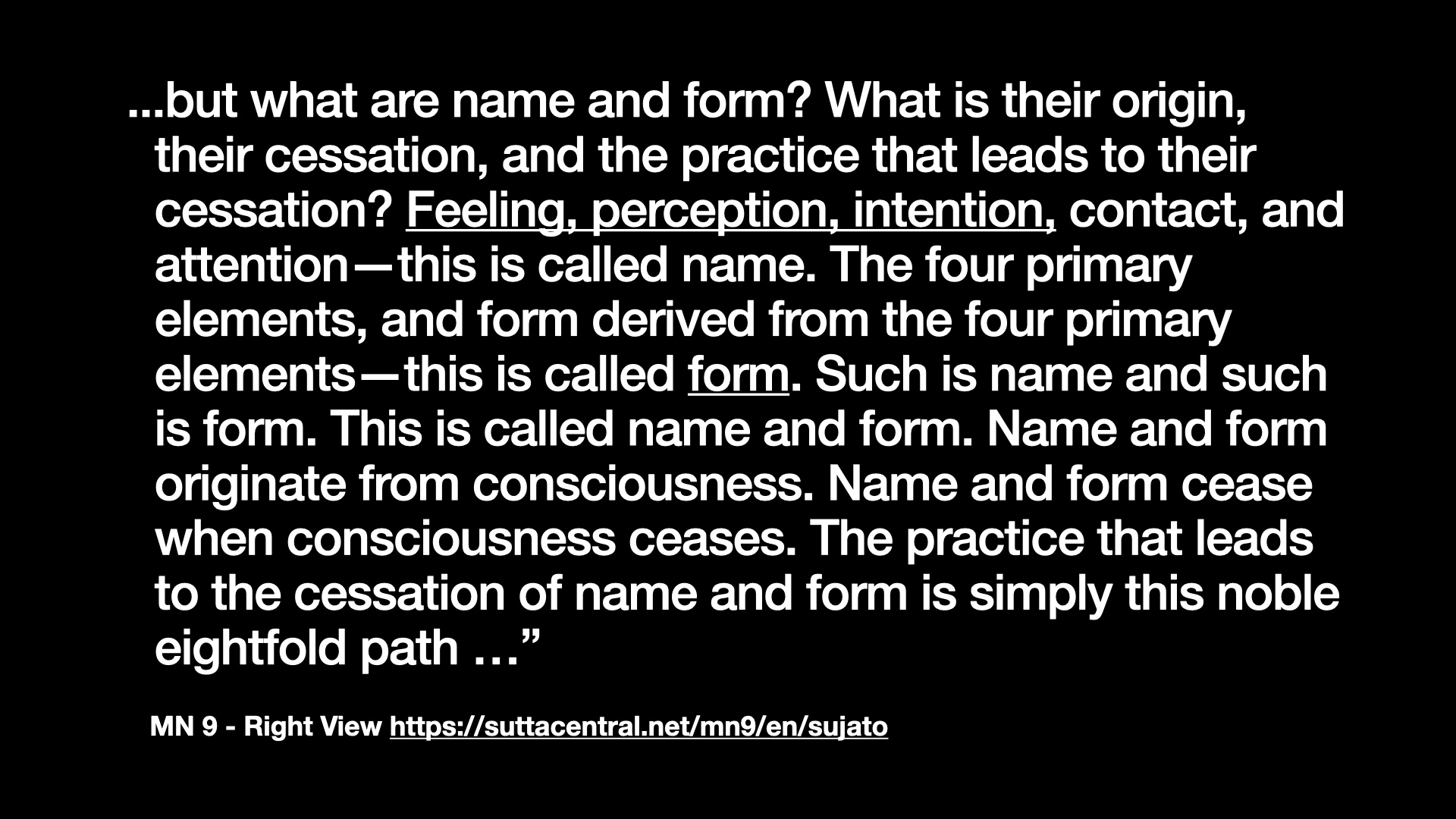
|
… Collectively, the five aggregates are both name-and-form, and consciousness. Form is the same in both the five aggregates and in name-and-form. The other aspects of name are: (sense) feeling, as in the five aggregates perception, as in the five aggregates intention, which is the same as the volitional formation in the five aggregates contact, which is made up of form, consciousness connecting and attention, which is about awareness underlying everything. Name-and-form is separate from consciousness in the early Buddhist texts. ... and how name-and-form (aka feeling, perception, intention/sankhara, contact, attention, form) and consciousness interact with each other, is the famous simile of two sheaves of reeds: # |

|
… they are mutual causes: each causes the other to come to be, like two sheaves of reeds leaning against each other. So your form, sense-feeling, perception, intentions/will can cause consciousness to arise, and vice versa. # |

|
The most important thing about the five aggregates is this: none of them, nor all of them together, are truly your self. This was explained very powerfully by the Buddha in his second sermon, the Characteristic of Non Self (Anattalakkhana sutta). If form, feeling, perception, will or consciousnesses are truly your self, then you won't suffer, because you can fully control it by wishing! That is why… # |

|
Any kind of form, feeling, perception, will/choice/decisions, consciousnesses whatsoever, should be truly seen as “not mine, not me, not my self/permanent essence.” So the Buddha is saying life is suffering, because everything (EVERYTHING) is not in your control: you are not in control, the world is not in control. Everything will change, and if you attach yourself and your projections to the world, you will suffer. # |

|
So is there no way out of suffering? No, there IS a way: Four Noble Truths (including the Eightfold Path). That is why Cause and Effect is critical. For if there was no cause and effect, then there is no point to doing anything at all! # |

|
You can see the importance of cause-and-effect from this excerpt of the Brahmins of Sala sutta, where Right View is described partially in terms of cause and effect. Note the underlined parts: how the first parts of Right View covers generosity! And then fruit (phala) and result of good and bad karma. Basically, karma is cause-and-effect. We will cover the rest of cause-and-effect in the next two sutta sessions, but before I end, I will just say this: if you don't believe in karma, if you don't believe in cause-and-effect, then there is no point in being a Buddhist, and in doing good of any sort! Because then, no matter what you do, your consequence is already pre-determined. But thankfully, that isn't reality: you CAN shape your path forward, by shaping your motivations & intentions, and by taking the right actions of body, speech and mind. We will cover those in the next two classes. Thank you. # |